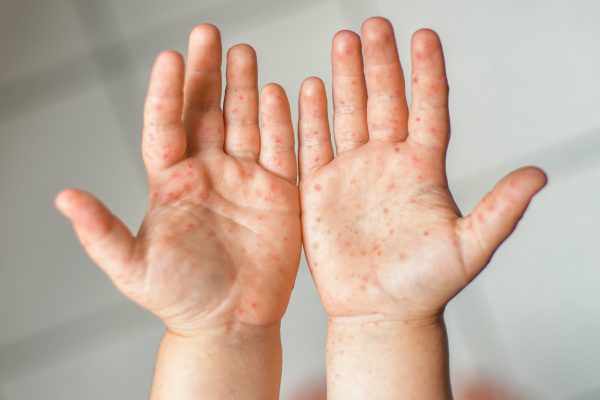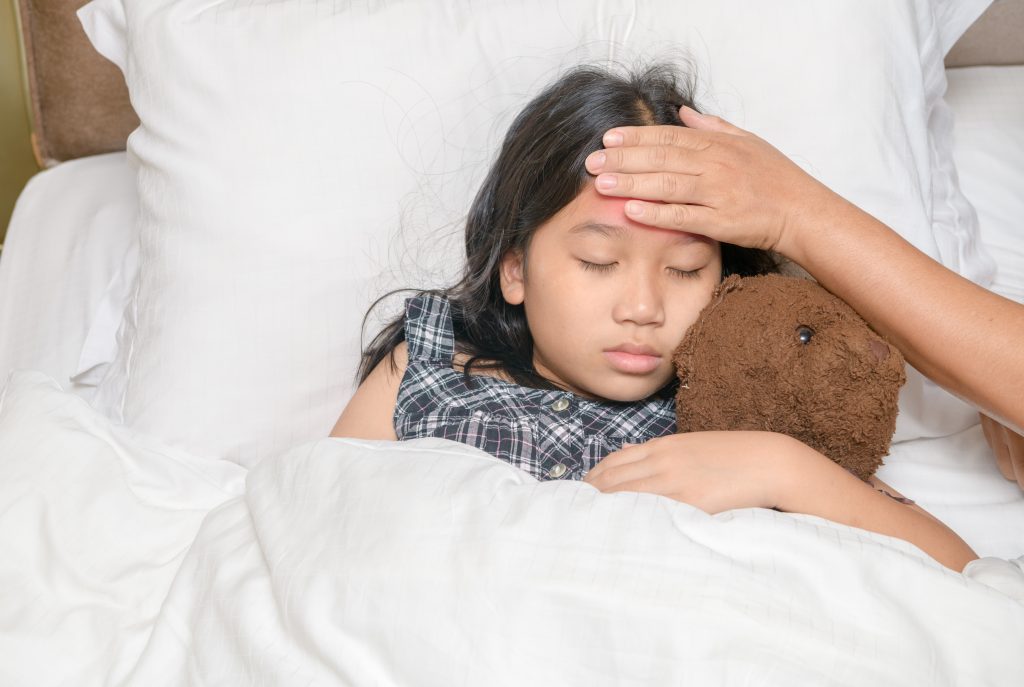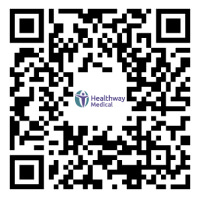Keeping Your Child Safe from Hand, Foot and Mouth Disease (HFMD)
What is Hand, Foot and Mouth Disease?
Hand, Foot and Mouth Disease (HFMD) is a highly contagious viral infection which is common in young children. Characterised by ulcers in the mouth and a rash on the hands and feet, it is caused by a group of enteroviruses, commonly known as the Coxsackie virus. These viruses spread through direct person-to-person contact, nasal discharge, saliva, faeces, and fluids from the rash of an infected person.
HFMD mainly affects children under the age of 10 and often those under 5. Children at these ages are more susceptible because they have lower immunity and have the tendency to put their hands in their mouths. Caregivers in close contact with a sick child are also at risk of getting infected.
Most parents send their children to infant care centres, childcare centres and preschools where they play, learn and socialise with their friends. The sharing of common facilities, books and even toys make them more susceptible to the highly-infectious Hand, Foot and Mouth Disease.

Transmission of Hand, Foot and Mouth Disease (HFMD)
Most cases of Hand, Foot and Mouth Disease (HFMD) spread within the first week of illness. However, in certain cases, the infected person may continue to spread the virus for several more days or weeks after their symptoms have subsided or even if they have no symptoms at all.
How does it spread?
Hand, Foot and Mouth Disease can be transmitted through:
- Respiratory droplets of the infected person when they cough or sneeze
- Physical contact with an infected person such as kissing, hugging or sharing food and drinks
- Touching the feces of an infected person when changing diapers, then touching your eyes, nose or mouth
- Touching infected objects or surfaces such as knobs, toys and tables, then touching your eyes, nose or mouth
Sometimes the viruses can be contracted by ingesting water from a recreational source, such as a swimming pool. If the water is not adequately chlorinated, it can get contaminated with the feces of an infected person and cause an outbreak.

Symptoms and Diagnosis of Hand, Foot and Mouth Disease (HFMD)
Symptoms may vary and may appear at different stages of the illness. Some of the symptoms of Hand, Foot and Mouth Disease include:
- Fever
- Sore throat
- Lethargy
- Ulcers in the throat, tongue, and mouth
- Rashes or small blisters on the palms of the hands, soles and buttocks. They can also appear around the mouth, elbows, knees and genital area
- Poor appetite
- Vomiting and/or diarrhoea
The incubation period, which is the period between exposure to the virus and the appearance of the first symptoms, is usually three to five days.
When should I consult a doctor?
In most cases, the infection will go away without treatment in 7 to 10 days. Only certain types of enteroviruses, like the Enterovirus 71, can cause serious complications that involve the heart and nervous system, and may even result in fatality.
Hence, it is advisable to consult a paediatrician as soon as your child shows symptoms of hand, foot and mouth disease (HFMD). While there is no specific treatment for HFMD, your child can be given symptomatic treatment to manage the fever and painful mouth ulcers such as:
- Putting your child on a soft diet like porridge or oatmeal to reduce the pain of swallowing
- Giving your child plenty of fluids such as water, diluted juices, rice or barley water to prevent dehydration
- Giving your child popsicles for temporary relief from painful blisters in the mouth area
It is very important that you inform your child’s school or childcare centre immediately and keep the sick child away from public places. You should also exercise good hygiene discipline to protect your family and prevent the virus from spreading.
Can I prevent my child from getting Hand, Foot and Mouth Disease (HFMD)?
While there are no vaccines to prevent HFMD at the moment, good hygiene habits can help prevent you and your child from catching and spreading the disease.
- Washing of hands with soap and water for a minimum of 20 seconds after changing diapers, using the bathroom, blowing nose, sneezing or coughing, and before and after taking care of an infected person.
- Clean and disinfect common surfaces such as tables, doorknobs and toys
- Avoid touching your eyes, nose and mouth as the virus can easily be transmitted through these areas if you touch them with unwashed hands.
- Avoid close contact with infected people as simple gestures such as hugging or kissing the child may spread the virus.
If you suspect that your child may be showing symptoms of Hand, Foot and Mouth Disease (HFMD), you may book an appointment or walk-in to your nearest SBCC Baby & Child Clinic for a consultation/screening check.









